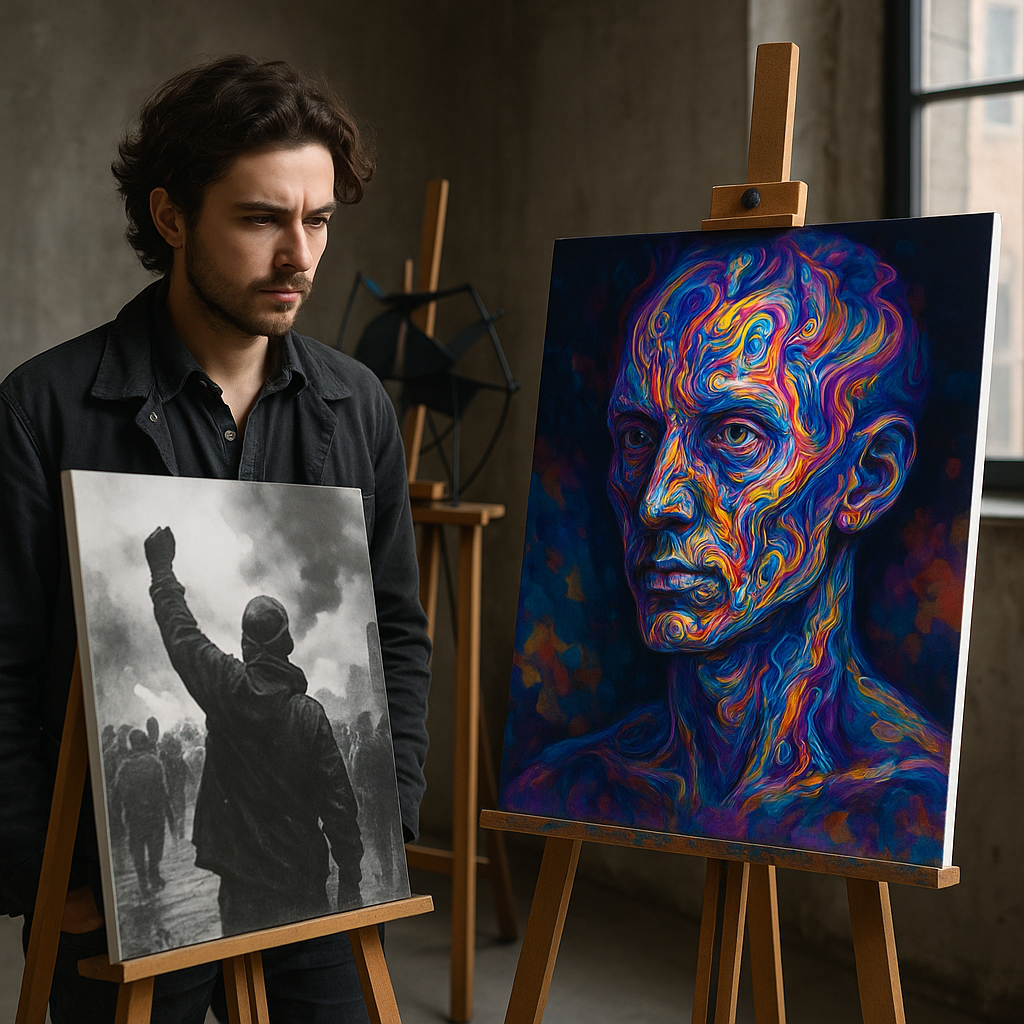Artists harness generative AI to critique capitalism and redefine creativity
The study positions Constructivism and Dadaism as vital historical precedents for contemporary AI-driven art. Constructivists, emerging during the Bolshevik Revolution in Russia, viewed the artist as an "engineer" and aligned art with industrial production and social transformation. Their projects, like Tatlin’s Tower and Rodchenko’s kinetic sculptures, celebrated technology as a liberatory force. These artists formed collectives, rejected individualist notions of authorship, and developed media like photomontage and montage cinema that prefigure today’s algorithmic remixing.

The rise of generative artificial intelligence (AI) in visual art is reshaping creativity, challenging perceptions of authorship, and exposing deep social critiques embedded in algorithmic systems. In a new peer-reviewed study titled “Generative AI and the Avant-Garde: Bridging Historical Innovation with Contemporary Art,” published in AI & Society, author Jurgis Peters of Tampere University explores how generative AI practices are both a continuation and reinvention of radical early 20th-century avant-garde movements such as Constructivism and Dadaism.
Drawing on historical parallels, case studies, and artistic theory, the paper evaluates how today’s AI-enabled art practices echo the avant-garde’s embrace of technology, randomness, and subversion while also reacting critically to the capitalist systems that now dominate technological innovation. The study frames generative AI as both a creative medium and a site of resistance.
How do early avant-garde movements shape the foundations of AI art?
The study positions Constructivism and Dadaism as vital historical precedents for contemporary AI-driven art. Constructivists, emerging during the Bolshevik Revolution in Russia, viewed the artist as an "engineer" and aligned art with industrial production and social transformation. Their projects, like Tatlin’s Tower and Rodchenko’s kinetic sculptures, celebrated technology as a liberatory force. These artists formed collectives, rejected individualist notions of authorship, and developed media like photomontage and montage cinema that prefigure today’s algorithmic remixing.
On the other hand, the Dadaists, reacting to World War I and the rise of mass mechanization, adopted a dystopian view. Their works, including Duchamp’s readymades and Hannah Höch’s political photomontages, used chance, absurdity, and irony to critique technocracy, militarism, and bourgeois aesthetics. The paper notes that this resistance to systems of control reappears in how today’s AI artists highlight the ethical and societal risks of machine learning.
Peters draws direct lines from these avant-garde methods to the mechanisms of generative AI: AI’s reliance on datasets mimics collage; the randomness in AI outputs reflects Dadaist chance; and the artist’s role as collaborator with AI recalls the Constructivist rejection of solitary genius. The study frames AI as a “memory machine” that recombines cultural detritus much like avant-garde assemblage art, collapsing past and present into synthetic realities.
How are contemporary artists using AI to critique technology and society?
The paper offers case studies of three contemporary artists whose work demonstrates the dual role of generative AI as both artistic tool and subject of critique. First, Kevin Abosch’s Civics (2023) series features AI-generated images of protest scenes. Though visually convincing, the images include anatomical glitches and distortions - intentional errors that expose the limitations and biases of diffusion models. Abosch challenges not only AI systems but also the myth of photojournalistic truth, suggesting that all media, AI or human, are composed and subjective.
Next up, Tom White’s Perception Engines reverses the gaze of AI systems. Instead of producing human-readable images, White designs neural networks that generate visual abstractions only machines can “understand.” These works critique content moderation systems and the opacity of algorithmic classifications. One of his images, while abstract to humans, was flagged as NSFW by both Google and Amazon, a subversive act echoing Dadaist mischief and Constructivist experimentation.
Thirdly, Peters assesses his own work, including The Moiré Gaze, an interactive installation where viewers’ faces generate surreal AI-augmented images in real time. This work reveals how AI reshapes perception by filtering reality through biased training datasets. It also critiques the cultural homogeneity produced by mainstream AI models trained on Western-centric image repositories like LAION. By deliberately incorporating visual glitches and exposing representational stereotypes, Peters channels both Constructivist hopes and Dadaist skepticism.
Across these examples, the study emphasizes that AI artists are not just producing new images - they are interrogating the political, social, and epistemological structures embedded in the technology itself.
How is generative AI redefining the artist, the artwork, and artistic responsibility?
The study further addresses a key question: what does it mean to be an artist in the age of generative AI?
The Romantic ideal of the artist as a sole genius is upended in a world where creativity is co-produced with algorithms. The paper highlights how modern AI artists function more as curators, editors, and critical facilitators. Echoing the Constructivist “artist-engineer” persona, today’s creators manage prompts, fine-tune models, and collaborate with computational systems. This reflects not only technical evolution but a philosophical shift in the definition of creativity and authorship.
Notably, the author argues that AI art must also address the ethical contradictions within generative systems. Artists such as Kate Crawford and Trevor Paglen, whose work Training Humans critiques facial recognition datasets, expose how AI development often perpetuates surveillance, labor exploitation, and data commodification. Peters aligns such projects with the Dadaist tradition of subversion from within the system.
- READ MORE ON:
- generative AI art
- avant-garde art in AI era
- AI and creativity
- artificial intelligence in art
- generative art criticism
- Constructivism and AI
- Dadaism and digital art
- how artists use generative AI to challenge capitalism
- role of AI in redefining creative authorship
- is AI the new avant-garde in visual culture
- FIRST PUBLISHED IN:
- Devdiscourse










